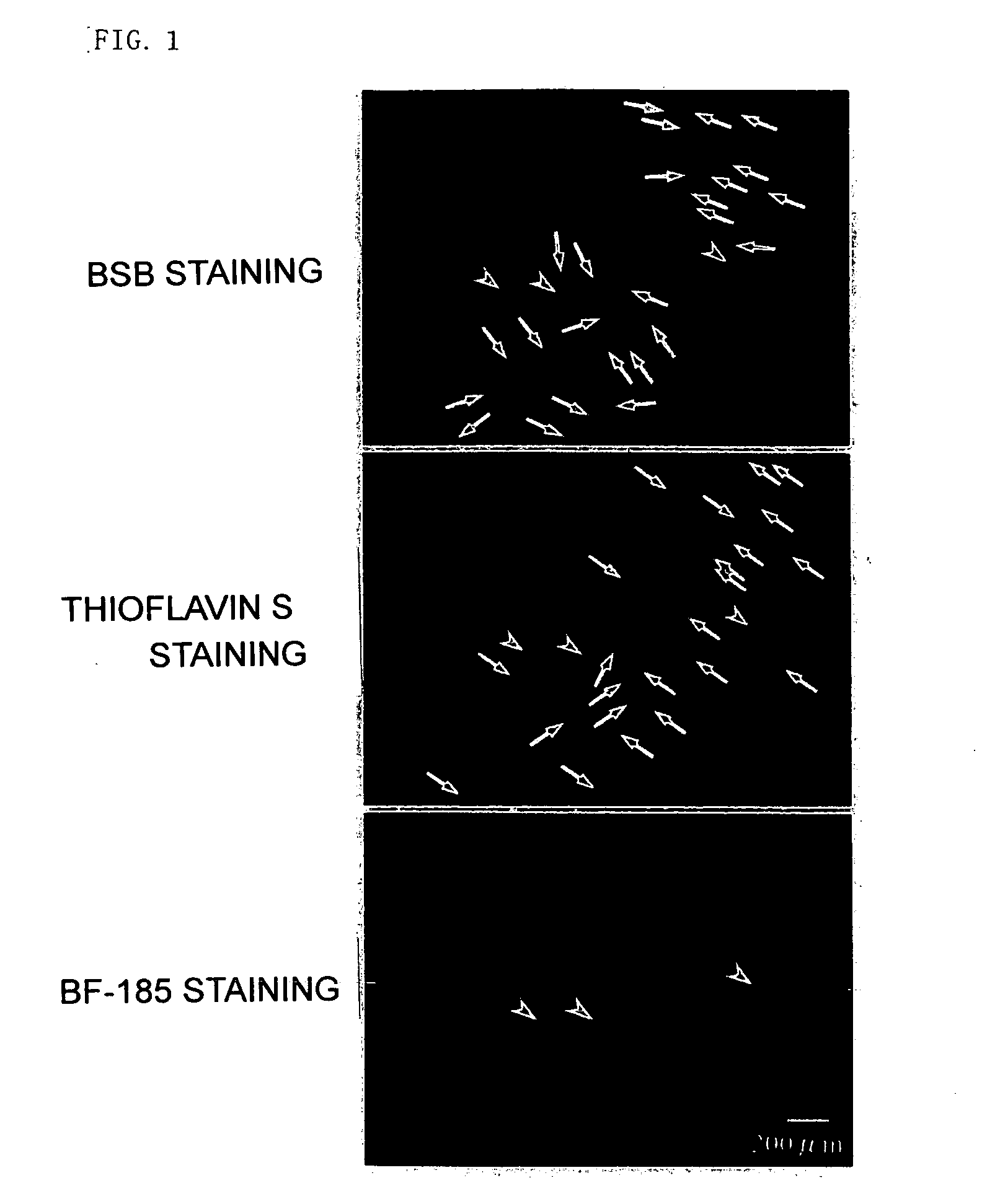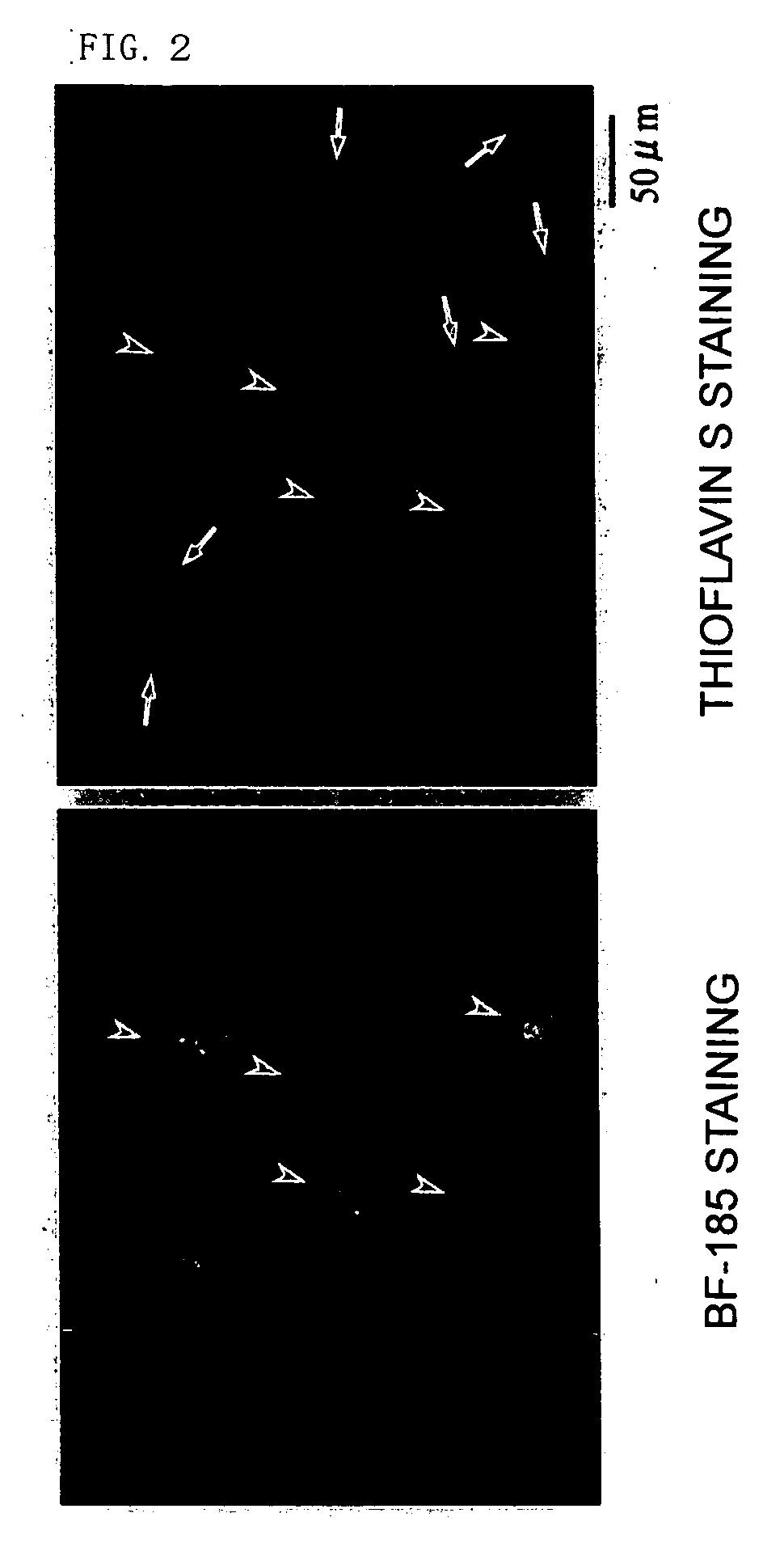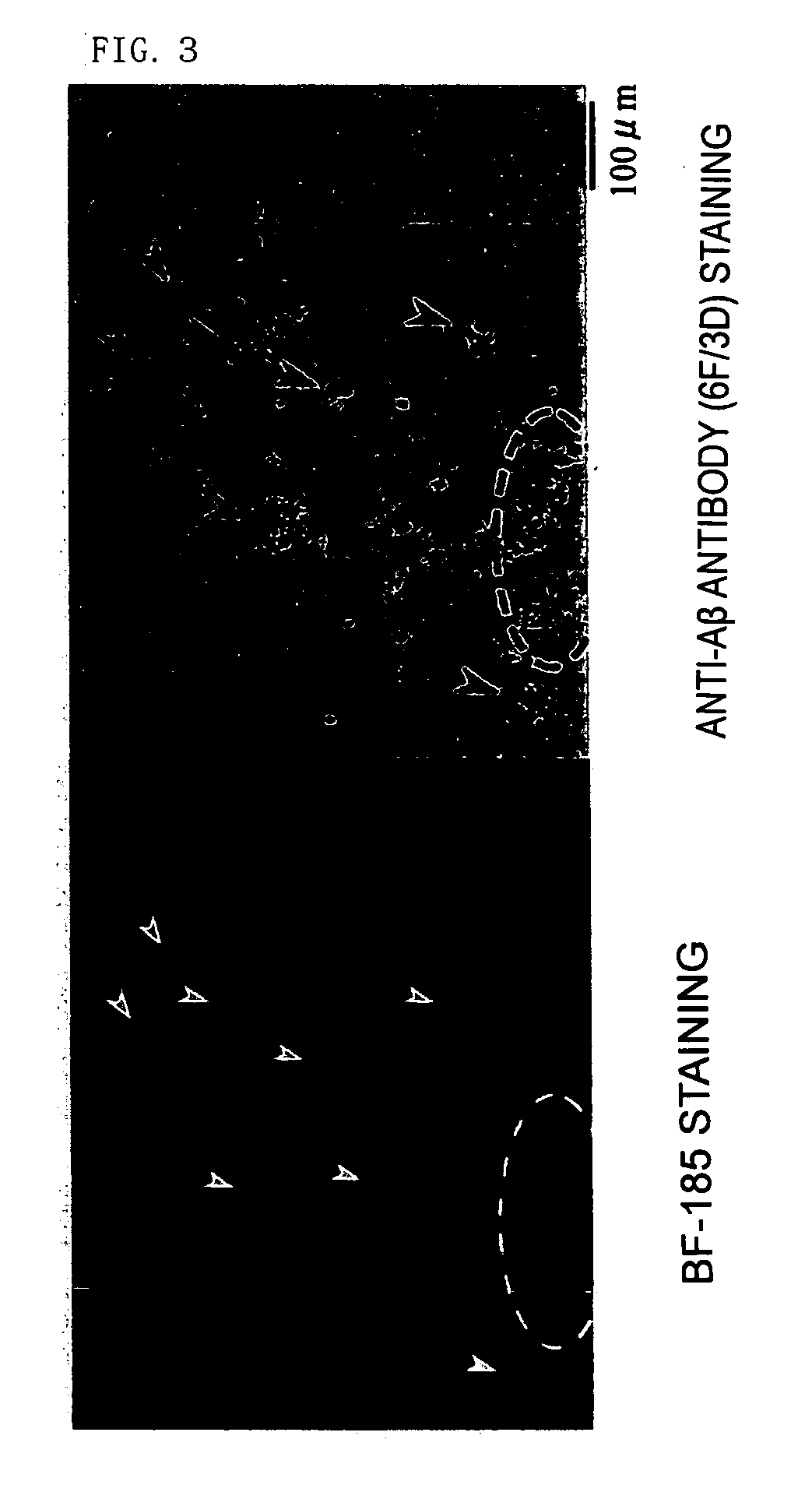Probe for diseases with amyloid accumulation, amyloid-staining agent, remedy and preventive for diseases with amyloid accumulation and diagnostic probe and staining agent for neurofibrillary change
a technology amyloid staining agent, which is applied in the field of amyloid staining agent for diseases with amyloid accumulation, can solve the problems of high patient number, high cost of patients, and difficulty in making accurate diagnosis of alzheimer's disease at these stages, and achieves enhanced amyloid staining property, high specificity, and high safety
- Summary
- Abstract
- Description
- Claims
- Application Information
AI Technical Summary
Benefits of technology
Problems solved by technology
Method used
Image
Examples
example 2
Acute Toxicity Testing
[0285] Table 2 shows the results of acute toxicity testing on compounds of the present invention performed by the above-described procedures.
TABLE 2Results of acute toxicity testing of the inventive compoundsMaximum Tolerated DoseCompound(mg / kg, intravenous administration)BF-185≧10BF-187≧10BF-189≧10BF-197≧10BF-201≧10BF-214≧10BF-215≧10BF-222≧10BF-225≧10BF-227≧10BF-228≧10BF-230≧10BF-231≧10
[0286] For PET imaging in humans, in general, total doses of a positron label and an unlabeled compound to be administered utilize single intravenous administrations ranging from 1×10−12 to 1×10−5 mg / kg, and often from 1×10−10 to 1×10−7 mg / kg. When the comparison is made between the maximum tolerated dose upon intravenous administration of these compounds and the total amount of compounds required for PET imaging, there are at least 100,000 times or more differences between both of these compounds, and therefore the inventive compounds are likely to be compounds which have ex...
example 3
Blood-Brain Barrier Permeability
[0287] Table 3 shows the permeability of test compounds into the brain in mice two minutes after intravenous administration. The content of the test compounds in the brain two minutes after administration was 3.9 to 19.0% ID / g.
[0288] With regard to blood-brain barrier permeability of compounds for PET or SPECT whose target is the central nervous system, it is believed that values of 0.5% ID / g or higher would be sufficient. In that sense, these test compounds are compounds having extremely high levels of blood-brain barrier permeability.
TABLE 3Blood-brain barrier permeability of the inventive compoundstwo minutes after intravenous administration (mice)% ID / g or mlCompoundBrainPlasmaBF-1853.91.0BF-1873.61.3BF-1884.81.7BF-19619.01.8BF-19715.01.9BF-2148.82.1BF-2158.82.5BF-22213.02.0BF-2277.92.1
example 4
Neurofibrillary Tangles Staining by the Inventive Compounds
[0289] As shown in FIG. 17, it has turned out that unlike thioflavin S, BF-221, which is a typical compound of the formula II of the present invention, has high specificity to tau protein (arrowheads). That is, thioflavin S provided enough staining of proteins other than tau protein, and BF-221 did not provide much staining of proteins other than tau protein. Similar results were obtained for BF-240 and BF-255
[0290] As shown in FIG. 18, BF-221 stained phosphorylated tau protein which was recognized by an antibody specific to phosphorylated tau protein (pSer422). It has turned out that the compounds represented by the formula II of the present invention could be used as probes or staining agents mainly recognizing tau protein, that is, probes or staining agents recognizing neurofibrillary tangles. Similar results were obtained for BF-239, BF-240 and BF-255.
PUM
| Property | Measurement | Unit |
|---|---|---|
| Force | aaaaa | aaaaa |
| Volume | aaaaa | aaaaa |
| Electric charge | aaaaa | aaaaa |
Abstract
Description
Claims
Application Information
 Login to View More
Login to View More - R&D
- Intellectual Property
- Life Sciences
- Materials
- Tech Scout
- Unparalleled Data Quality
- Higher Quality Content
- 60% Fewer Hallucinations
Browse by: Latest US Patents, China's latest patents, Technical Efficacy Thesaurus, Application Domain, Technology Topic, Popular Technical Reports.
© 2025 PatSnap. All rights reserved.Legal|Privacy policy|Modern Slavery Act Transparency Statement|Sitemap|About US| Contact US: help@patsnap.com



